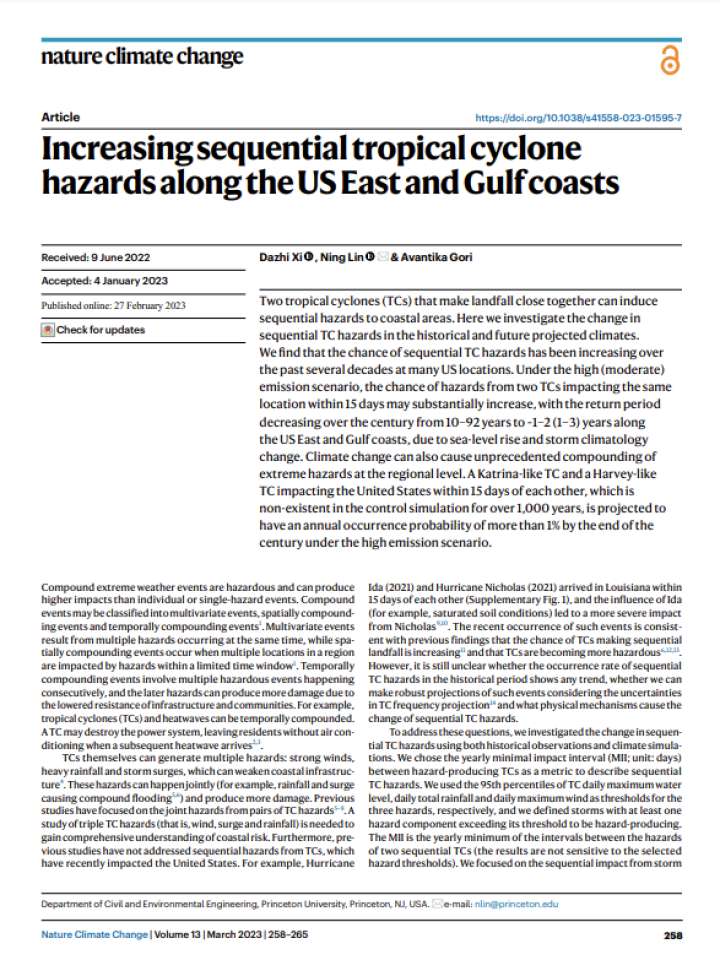Increasing sequential tropical cyclone hazards along the US East and Gulf coasts
This paper investigated the change in sequential tropical cyclones (TCs) hazards using both historical observations and climate simulations. The researchers chose the yearly minimal impact interval (MII; unit: days) between hazard-producing TCs as a metric to describe sequential TC hazards. We used the 95th percentiles of TC daily maximum water level, daily total rainfall and daily maximum wind as thresholds for the three hazards, respectively, and we defined storms with at least one hazard component exceeding its threshold to be hazard-producing. The MII is the yearly minimum of the intervals between the hazards of two sequential TCs (the results are not sensitive to the selected hazard thresholds). We focused on the sequential impact from storm hazards at the same location (temporally compounding events). We also present a brief analysis of the sequential impact from severe TCs on the US mainland (spatially compounding extremes). As an additional reference, we analysed marginal and joint TC wind, surge and rainfall hazards (multivariate events) to help us understand the cause of changes in sequential TC hazards.
The study finds that the chance of sequential TC hazards has been increasing over the past several decades at many US locations. Under the high (moderate) emission scenario, the chance of hazards from two TCs impacting the same location within 15 days may substantially increase, with the return period decreasing over the century from 10–92 years to ~1–2 (1–3) years along the US East and Gulf coasts, due to sea-level rise and storm climatology change. Climate change can also cause unprecedented compounding of extreme hazards at the regional level. A Katrina-like TC and a Harvey-like TC impacting the United States within 15 days of each other, which is non-existent in the control simulation for over 1,000 years, is projected to have an annual occurrence probability of more than 1% by the end of the century under the high emission scenario.
Explore further
